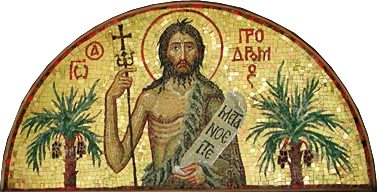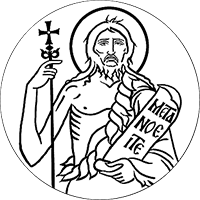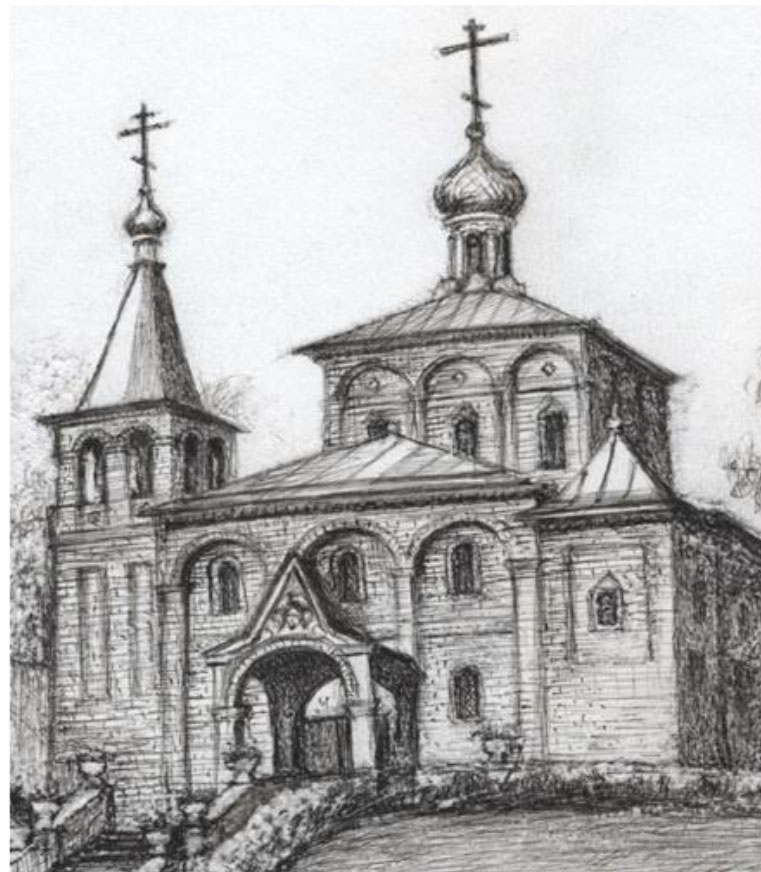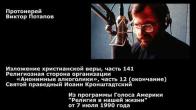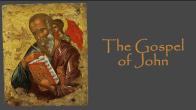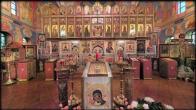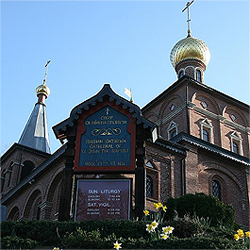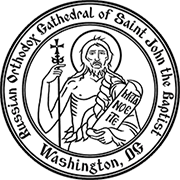Иосиф Муньос-Кортес
Jose Munoz-Cortez
- Jose Munoz-Cortez (1950-1997) The Chosen One of the Mother of God
- Icon of Brother Joseph
- Interviews with Brother Joseph
- The trial of the murderer of Brother Joseph Munoz-Cortes
- Reactions to Brother Joseph's Murder
- Pilgrimage to Brother Joseph's Grave
- Remembering Brother Joseph
- Accounts of Miracles from the Iveron Myrrh-streaming Icon of the Mother of God and Brother Joseph
- Videos about Brother Joseph
- A new copy of the Montreal Iveron Icon of the Mother of God
You are here
Reminiscences of Claude Lopez
The following, originally in French, are reminiscences of Claude Lopez, a friend of brother Joseph. Claude is a teacher, he lives with his wife in Switzerland. Translated by Yelena Petrovna Cox.
When the miracle of the Myrrh-streaming Iveron Icon of the Mother of God, Keeper of the Portal, appeared, I never imagined that I would be able to see it. Likewise, I never imagined that I would some day meet its curator. I read in the magazine Orthodox Lifeabout the miracle wrought in our day by the Most-holy Mother of God. Olga Alexeevna Cantacouzine, mother of our priest [now Bishop Ambrose – ed.], received a reproduction of the Icon from the USA, and I was moved by this marvelous image.I asked to borrow it so that I might photograph it and have a copy for myself.
In February 1987, the Icon spent some time in Geneva. I carved an Icon of the Holy Family to give to Joseph. By God’s providence, I was able to meet with him before the Miraculous Icon arrived at the Cathedral. I approached him and offered him my icon. I do not remember the exact words of our conversation, but we somehow immediately became close friends. We shared a common Spanish heritage and an interest in holy things. I promised that when he came to visit our church in Vevey, I would give him relics of some Western Orthodox saints.
From the time I first met Jose, I was stunned by his simplicity, his natural benevolence, and his humility. All of our subsequent conversations dealt with the same subjects: the Church, the saints, and their holy relics, which we took every opportunity to collect, as the Latin Church had turned away from them, and was disposing of them, either by throwing them away or offering them to antique shops for sale. I remember with what indignation and passion he related to me that in Spain he had encountered a monk who was digging a pit before the walls of a monastery. Out of curiosity, Joseph approached him and asked what he was doing. It turned out that he was preparing to bury relics which had been kept at the monastery, but for which they had no more use. Joseph took those relics and installed them in a new reliquary.
On May 4, 1987, Joseph again visited Switzerland. Our priest told us that he was planning to come to Vevey and wanted to spend the night with us rather than in a hotel. For the two nights preceding Jose’s arrival, I could not sleep. I could not imagine that the All-holy Theotokos would enter our home and be with us in our bright corner. We prepared an analogion upon which to place the Icon. After a moleben and akathist we descended into the parish hall for a communal meal. In attendance were several Catholics who had read some scandalous and inane writings of Daniel Ange about Jose and the Icon. Jose spoke with them, and they were quite surprised and upset by him. Jose told me that he had once met a group of Daniel Ange’s followers who did not want to believe that he was Jose Munoz and that the Icon belonged to him. At the time, those people affirmed that Jose was a Catholic, and that the Icon was only on loan to the Russian Church and would return to the Catholics when the Lord would so direct. It did no good for Jose to show them his passport as proof of his identity; they knew the real Jose Munoz, and it was not he. On top of that, they made Jose indignant by engaging in commercial activity. One Catholic priest asked permission to photograph the Icon, which at that time was without a riza.. Soon after giving him permission, Jose learned that thousands of copies had been made, and that they were brazenly being sold. He contacted that priest and told him that he had made a vow to the Mother of God never to traffic in this Miraculous Icon. In response, the priest asked whether he was prepared to reimburse him for the cost of making the thousands of copies.
Subsequently, other examples of flourishing “holy commerce,” commercial enterprises of the Latin Church, came to light, and Jose could do nothing about them. One could sense how wounded he felt. He told me that nonetheless, he did react when he once saw a notice in a newspaper advertising the sale of myrrh from the Icon of the Keeper of the Portal. He went to the stated address, appeared to be very interested, and asked that the entire stock of bottled myrrh be brought to him. When the bottles of myrrh were put on the counter, he threw them all to the ground and broke them. He told the seller that Holy Myrrh had never been sold. He had no illusions, and very sadly told me that he recognized that sales would recur.
When I told him that I had an entire folder of false notices about the Icon, put out by various Roman Catholic entities, he asked me to send him copies, and to make copies for the Metropolitan. I fulfilled his request.
By the time we got home to Saint Triphon, it was almost midnight. We immediately put the Icon on an analogion in our Bright Corner. Jose spent a long time looking at the icons and reliquaries. He especially liked a carved Cross which Josette Domas, one of my wood-carving students, had given me. When I noticed that he liked this Cross, I asked him not to pick it up, but to tell me whether he would accept it as a gift. He was a bit surprised, but he accepted my offer. Then, I handed him the Cross, turning it over [so that he might see the back]: relics of Western Orthodox saints from the early Centuries were embedded throughout the horizontal crossbar. I would not have wanted him to turn down my gift on the grounds that he would be depriving me of those relics. He promised me to install the Cross next to the Keeper of the Portal at his home in Montreal. My wife Dominique gave him a ceramic lampada for the Icon of the Mother of God.
He liked our home, and he expressed the intention to return here someday and spend some time in tranquility. Dominique and I greatly rejoiced. Only later did we comprehend how tired Jose was, how exhausted Jose was by all of these travels. I had carved an icon of the Keeper of the Portal. When he saw it, he was touched, and he gave me a small bottle of Myrrh from the Miraculous Icon, with which to anoint the surface of my wooden icon. As I was uncertain about doing so, he began to insist that I anoint this icon with Myrrh from the original. I did so.
Jose went to bed. Dominique did as well. But I could not sleep. The Mother of God was here. I simply could not believe it. I had so much to tell her, I had so many requests to make. There were so many people for whom to pray. I spent the rest of the night in prayer for my father, who had reposed less than a year earlier, and for all of those living and dead whose names I could remember.
Jose asked me to wake him at five o’clock. I knocked on his door. He answered in Russian, “Da!” Apparently, he thought that he was in the Lesno Monastery in Provemont. Then he came into the kitchen. He said that he had slept well, and that it was the first time that he had not kept the Icon with him the entire night. The Metropolitan had directed that he never be separated from the Icon. He drank some black coffee, and ate nothing. We went to our prayer corner and made several photos with the Icon. Then we went to Vevey. After Services, we accompanied the Icon, Jose, and our priest to Berne. As always, Jose kept himself out of the center of attention. Who would have thought that this man dressed in black had accompanied the Icon? Anyone who did not know him could not have imagined that the humble man standing in the back was the curator of the Keeper of the Portal. He once told me that because he dressed in black, many took him to be a fascist.
We would meet with Jose each time he came to Switzerland. He became friends with Dominique, and began to give her advice about iconography. He left her some materials about iconography and promised that somehow he would manage to come to Saint Triphon for a more extended stay, so that he might give her lessons in iconography.
On one occasion, we went to Provemont in order to see him and the Icon. We spoke with him at length. He spoke with my mother, who was also there. He was concerned about my health, about the condition of my eyes, and then he suddenly asked me whether I had relics of St. Panteleimon. I told him that I had a tiny relic, the size of a pinhead. From under his shirt, he immediately took out his pectoral Cross, opened it, and gave me a piece of bone from the Holy Healer. For a long time, Dominique, my mother, and I talked with him. He was relaxed, and spoke to my mother as if he had known her all his life. He spoke with a slight Spanish accent, and his voice sounded so tender and comforting that it brought tears to our eyes. What was remarkable was that even when talking about himself, he did not put himself in the limelight. He was truly humble. Other than the very occasional apparently inadvertent mention of his health or his exhaustion, his interests seemed to be directed at others, at the Church, Icons, the Saints and their Holy Relics. On several occasions I saw him troubled and righteously indignant over injustices that cried to the Heavens. I know that he sometimes chose to suffer alongside those who endured injustice. He would openly stand up for them in order to help the persecutor recognize all of his injustice before God.
When brother Joseph visited us with the Icon of the Most-pure Mother of God for the second time, we had more time to talk. He put the Icon of the Keeper of the Portal in our prayer corner. In the room in which he had stayed the first time, he saw a large reproduction of the Keeper of the Portal, framed in a metal riza. He was sincerely and deeply touched. He gave us relics of the Holy New Martyrs of Russia Grand Duchess Elizabeth and Nun Barbara. (Later I was to learn from Jean Besse that Grand Duchess Elizabeth would sometimes appear to brother Joseph in Provemont. We again talked about the saints, about the Church, and about the monastery he was planning to visit on the island of Andros. Father Dorotheos, abbot of the Monastery of St. Nicholas on Andros, was hoping that the two myrrh-streaming icons would meet. [There is a myrrh-streaming icon of the Mother of God at the monastery on Andros – Ed.] Earlier, while recuperating from surgery in Geneva, Fr. Dorotheos was staying with a certain Greek acquaintance, he learned that a Miraculous Icon was to visit the Russian Cathedral. He was very sad to be unable to go to church and venerate the Icon. He asked that I implore Jose to visit him with the Icon. I must confess that it thought that it would be very difficult to grant the request. I knew that whenever Jose would come to some parish in Switzerland, he would entrust the Icon to the clergy and would remain out of sight until his departure.
When our priest offered that I accompany the clergy to welcome the Icon at the Geneva airport, I happily agreed.
We all formed a lively crowd around Jose and the Icon. The airport was filled with noise, as everyone who had come to meet him was talking at once, and acting like happy children. Amidst all this din, I managed to tell Jose that Fr. Dorotheos had recently undergone surgery and very much wanted to venerate the Icon, but that he was not ambulatory. I thought that in all likelihood it was a futile gesture, for he probably could not hear me. But Jose did hear me! He went with the Icon of the Keeper of the Portal to see Fr. Dorotheos, and they became friends. Jose visited his monastery on the eve of his martyrdom.
From that time on, Jose’s visits to Geneva or Vevey were never long enough for him to stay with us. However, we treasured the moments we were able to spend with him. Although the number of people who knew him continued to increase, he remained unnoticed, either in church or outside, when the clergy would bring the Icon into the church. When he would not be staying with us, from time to time we would receive, by way of common acquaintances, either Myrrh from the Icon of the Keeper of the Portal or other holy items (He knew of my profound reverence for St. John Maximovitch, and would not miss any opportunity to send me a piece of his clothing or of the Holy Wonder-worker’s vestments following the opening of his Relics in San Francisco.).
The last time Joseph came to Vevey, we found him exhausted, aged, and preoccupied. The problems facing our Church and our hierarchs’ association with the Old-calendarist Greek Metropolitan Cyprianos saddened him. He spoke at length with my wife Dominique about iconography, but his soul was pained by the disorders in our Church, and he was troubled by its future. He persistently asked for Dominque to pray for him, something I found odd. At that time, we did not yet know that the Athonite monk Fr. Clement had told him that in 1997 he would be the object of awful slander. At that time, we did not yet know that he had had a prophetic dream, in which he was bound hand and foot and was choking, that he had spent the entire night in fervent prayer and only toward dawn was able to free himself from that demonic bondage and breathe [freely]. And we knew nothing about the awful vision regarding our Church which he experienced before the Icon of the Keeper of the Portal on the night of Metropolitan Philaret’s death (in 1985 – ed.). We sensed his tiredness and his longing after God. We did not know that he had told one of his friends that he often prayed to return to his heavenly home, as he was so tired. In photographs taken several months before his martyric death, he appeared to have prematurely aged. Later we found out that before his final departure from [the women’s monastery in] Provemont, he made a full prostration before each person. His benevolence and attention to others and to their difficulties (did he not pray for everyone at least nine hours each day?) remained unchanged, but one could see that he was more troubled, than could have been surmised from the justifiable passion with which he spoke about serious problems facing our Church.
He sat under a chestnut tree near our church. He glanced at me with joy, with sparkling eyes, and asked me whether I believed that the relics found in Russia were truly those of the Royal Family. I answered in the affirmative. Then he told me that he had met the person who had found the relics of the Royal Family, and thought of me. He remembered that in my prayer corner there was a coin bearing the image of the Tsar-Martyr which over the course of several years had streamed Myrrh. He had kept for me a relic of the Tsar-Martyr’s skull, and a piece of the Empress’ clothing. I was beside myself with joy, and that joy filled him as well. He said that he would either give me those precious relics when he next came to us, or would leave them with a certain nun in Provemont. I promised to give him a relic of a certain Gallic Hieromartyr. I gave him an English-language version of my guide to saints who help in specific circumstances, and he immediately asked whether there was a particular saint to whom one should pray about diabetes. Unfortunately I did not find such a saint. After Divine Services, he left for Geneva. I could think of nothing but the Holy Tsar-Martyr. Dominique was happy: Jose had promised to give her his iconographic sketches.
Several months later, Jose came to Provemont on the occasion of their Patronal Feast. Vladyka Amvrossy asked me to call and remind him that he very much wanted Jose to bring the Icon to Bari for the Feast of St. Nicholas. He also asked me to pass on another, more personal, request. Jose confirmed that he would be in Bari. I told him that I had finally found a saint (St. Mercurial) to whom one suffering from diabetes could pray. Then, like an impatient child, I asked that he not forget his promise about the relics of the Tsar-Martyr. I could have gone to Provemont, and still regret that I did not do so…
One Saturday, as I was tidying up my prayer corner and my holy relics, I remembered that conversation about taking a trip to Andros. For reasons I could not clearly determine, I regretted that I had not then gone to Provemont (to the Lesno Monastery). I thought it was probably the result of my fervent desire to venerate the relics of the Holy Tsar-Martyr. I told Dominique (Claude’s wife – Ed.) about it. The next day, we learned that Jose had been martyred in Athens.
It took a long time for us to grasp the unimaginable. It will take far much longer to forgive the mad and criminal baseness of a certain Greek cleric who sullied Jose’s reputation; doubtless, he acted in revenge for the fact that Jose did not want to bring the Keeper of the Portal to his monastery, did not want to give him yet another opportunity for even greater self-exaltation than that in which he was already constantly engaging.
In the middle of the night, John File telephoned from Daytona. (Apparently, John was unaware of the difference in time zones between Europe and America.) He called to tell me about the first miraculous signs related to Jose that were manifested following his martyrdom, about Jean Besse’s remarkable article regarding our brother-martyr and about the brotherhood of men from every continent who knew Jose and who were now joining together in common reverence for him to somehow mitigate the pain of separation from him.
Many people worried about what had happened to the Icon, and gave no thought to Jose or to his aged mother. Far too many people considered that what Jose had been doing was ordinary activity. Yet who would have agreed to relinquish any personal life in order to constantly accompany the Most-pure Mother of God in her travels about the world? Who could imagine how many hours Jose spent daily in prayer for everyone he met along the way, and how much, despite his physical exhaustion, he pleaded on behalf of others before the All-merciful Mother of Our Lord? In talking to us, he never complained, and he was never concerned about himself. He thought only about the Church and the flock. At the same time, he felt very sorry for those Western Saints of the Orthodox Church who were forgotten, thrown out with the garbage, or gathering dust in antique shops. On that account, he immediately appealed to me. I remember a little reliquary containing relics of the Holy Great-martyr Barbara, found lying in the ruins of a church, amid hay, old automotive tires and batteries, and even an entire litter of kittens. When I saw Jose for the last time in Vevey, he animatedly told me about relics he had rescued in South America by buying them from nuns who wanted to be rid of them. The relics included those of St. Honestus. He immediately offered to share them with me, but it turned out that I already had a relic of that saint.
He was a true giant in the physical and spiritual sense, but he exuded a tenderness, which was reminiscent of physical weakness. He was a child. Each day he fell prostrate before our Heavenly Mother, so that he might later fulfill the instructions she gave him in the secret place of his soul….
The pain of his absence has not gone away, but now it is not as sharp [as before]. On the night of Pascha, I felt a moment of profound sorrow that Jose had left us. Yet we lack only his physical presence. We strongly feel his presence in spirit, and the persistent manifestations of his intercession for us are becoming ever more apparent.
If it should so please God, the miracles will continue. There will still be skeptics. Others, ever wary, will wall themselves off from [showing] love and reverence [for Jose] in divine canons until he is officially recognized, something superfluous in light of his obvious martyrdom. Many waited thirty years before agreeing to recognize the sanctity of Holy Hierarch John Maximovitch; many of those who officially pronounced his sanctity had previously persecuted him.
We shall not wait! We already know, for through the mystery of prayer, our hearts have already told us, without any undue haste or harmful ecstasy, that our brother Jose Munoz-Cortes stands before God. As stated in the title of Jean Besse’s spiritual portrait, he is “The Chosen One of the Kingdom of Heaven.”
O Holy New Martyr Joseph, pray to God for us!”
PARISH LIFE
RECENT VIDEOS
Address of our Cathedral
Subscribe to our mailing list
While all the materials on this site are copyrighted, you may use them freely as long as you treat them
with respect and provide attribution on the Russian Orthodox Cathedral of St.John the Baptist of Washington DC.
